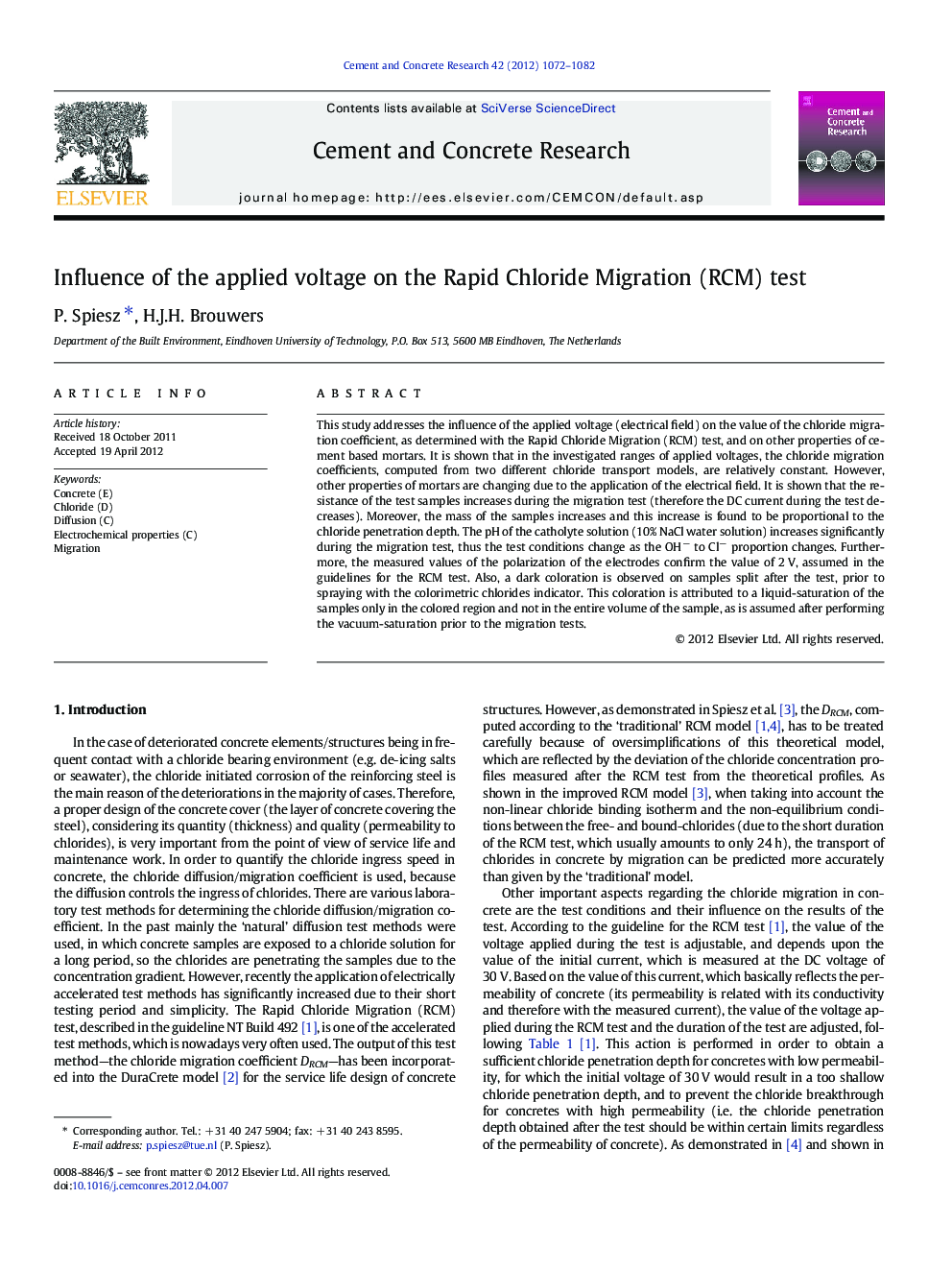| Article ID | Journal | Published Year | Pages | File Type |
|---|---|---|---|---|
| 1456537 | Cement and Concrete Research | 2012 | 11 Pages |
This study addresses the influence of the applied voltage (electrical field) on the value of the chloride migration coefficient, as determined with the Rapid Chloride Migration (RCM) test, and on other properties of cement based mortars. It is shown that in the investigated ranges of applied voltages, the chloride migration coefficients, computed from two different chloride transport models, are relatively constant. However, other properties of mortars are changing due to the application of the electrical field. It is shown that the resistance of the test samples increases during the migration test (therefore the DC current during the test decreases). Moreover, the mass of the samples increases and this increase is found to be proportional to the chloride penetration depth. The pH of the catholyte solution (10% NaCl water solution) increases significantly during the migration test, thus the test conditions change as the OH− to Cl− proportion changes. Furthermore, the measured values of the polarization of the electrodes confirm the value of 2 V, assumed in the guidelines for the RCM test. Also, a dark coloration is observed on samples split after the test, prior to spraying with the colorimetric chlorides indicator. This coloration is attributed to a liquid-saturation of the samples only in the colored region and not in the entire volume of the sample, as is assumed after performing the vacuum-saturation prior to the migration tests.
